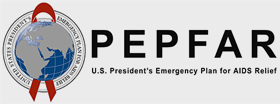
View the original resource on the Medicines, Technologies, and Pharmaceutical Services (MTaPS) Program website
Retail pharmacies are a crucial part of health systems and, in many countries, are responsible for dispensing a large proportion of health products and related services. In high-income countries, retail pharmacies often work on a contractual basis with public or private insurance for dispensing medicines to both public and private sector outpatients. In contrast, in many low- and middle-income countries (LMICs), government institutions are largely responsible for dispensing medicines to those who do not have the income to purchase medication at retail prices or who need life-saving medicines. However, many LMICs experience a lack of investment in supply chain, financial and human resources to guarantee the availability of appropriate health products and services in government institutions.
Countries striving to achieve universal health coverage and to implement insurance and other medicines benefits schemes, have an opportunity to incorporate retail pharmacies as an integral part of the public health system supply chain.
Based on case studies from three high income countries (Spain, Sweden, and the United Kingdom) and four LMICs (Argentina, Brazil, Ghana, and Namibia), and an extensive literature review, this thought leadership paper aims to complement previous work on the subject by:
- Identifying the advantages and disadvantages of contracting private pharmacies to deliver essential medicines for public sector clients in LMICs
- Describing promising policies and strategies for using retail pharmacies to deliver essential medicines for public sector clients in LMICs
View or download thought leadership paper
Watch webinar presenting the findings from the paper followed by panel discussion
Annexes to the thought leadership paper


